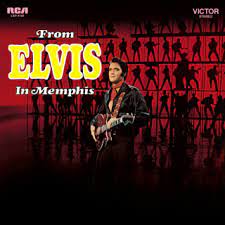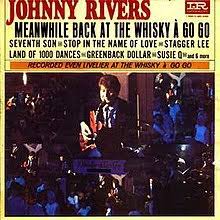Tutorial Pricing: $3.25ea OR any 10 for $10
(use code "Any10410" at checkout)
Paid Requests for $25ea
(comes with any 8 freebies -> so 9 for $25)
100's Of Free Demos & Chord Sheets
Elvis Presley Famous Songs
For the Acoustic
Welcome to my Elvis Presley famous songs page featuring many great well known songs by the king of rock and roll. I have other sections below featuring movie songs and greatest hits etc so be sure to check those out.
Help yourself to the free chord sheets and demos etc and if you'd like to purchase the full lesson tutorial, there is a link below for a small fee.

9 Easy Elvis Guitar Songs
10 Elvis Presley Greatest Hits
11 Gospel Songs by Elvis Presley
12 Elvis Presley Wall Art
14 Elvis Songs In The 50s
14 Elvis Songs In The 70s
17 Elvis Songs From The Movies
18 Love Songs Of Elvis Presley
Click the drop down menu to quickly access the lessons on this page.
Elvis Presley Famous Songs
Chords, Demos, Lyrics, Tutorials
1. A Mess Of Blues

Elvis Presley's recording of "A Mess of Blues" is a classic rock and roll song that was released in 1960. The song was part of his album titled "Elvis Is Back!" which marked his return to the music scene after completing his military service.
"A Mess of Blues" was released as a single in July 1960 and later included in the album. Known for its upbeat tempo and Elvis's energetic performance, the song captures the essence of his early rock and roll style.
The lyrics express the singer's feelings of heartbreak and the challenges of love, set against a lively musical backdrop.
"A Mess of Blues" is celebrated for its catchy melody, Elvis's dynamic vocals, and its contribution to the rock and roll sound of the early 1960s.
This one you can play in Drop D Tuning with a capo on the 3rd fret with the chords A, D and E7. No lead work as you play a
down strokes and a down up down up in a steady rhythm shuffle pattern.
Jump To Top
2. Blue Christmas

Blue Christmas was recorded by four artists before Elvis Presley. Doye O'Dell had the first in 1948, followed Ernest Tubb, Hugo Whiterhalter and Russ Morgan in 1950. Elvis recorded his version in 1957 and is the most played version during the holiday season. The single wasn't available until 1964, the same year The Beach Boys recorded their version.
You may have a tendency to want to play a bass note during the rhythm and if you do, the only place that would fit is while on the B7 chord.
This song has a rockabilly vibe to it with a pretty simple rhythm pattern using a root up down up root up down up strum. Leading into the B7 change from the E you have a quick G,A, A# run to the B note on the A string.
What they did on the line "a-a-a bout you", they used a string bend from the Gb note up to the G, or you can use a quick slide up to that note. On an electric it's a bit easier to bend that note.
Jump To Top
3. Devil In Disguise

Devil in Disguise was recorded by Elvis Presley and became a successful hit for him. The song was written by Bill Giant, Bernie Baum, and Florence Kaye. It was released as a single in 1963 and later included on the album "Elvis' Gold Records Volume 4."
"(You're the) Devil in Disguise" showcases Elvis's versatile vocal style and features a catchy, upbeat melody. The song's theme revolves around a deceptive and alluring person, represented as the "devil in disguise."
Upon its release, the song performed well on the charts, reaching the top spot in the UK and peaking at number three on the Billboard Hot 100 chart in the United States. It remains a popular and well-regarded track in Elvis Presley's extensive discography.
For the rhythm in this song you'll need two different rhythm patterns. The first is a simple root down up root up down up and repeat pattern as the slower portion of the song. The when the pace picks up you'll need to switch to a root down up down up down up and repeat pattern.
The chords here I'm going to play it in G, C, D and Em. The original key is in F which makes it easier to sing but a bit messy to play as you'd need flats and sharps to make this work. Plus is makes the little bit of picking in this song a bit awkward.
There is a bit of a break in here before the last verse but nothing too complicated.
Jump To Top
4. Don't Cry Daddy

Don't Cry Daddy is a touching ballad that Elvis recorded during his later years. Elvis recorded "Don't Cry Daddy" on January 15, 1969, and released it as a single in 1969, with "Rubberneckin'" as the B-side. It was later included in Elvis' studio album "From Elvis in Memphis," which was released in 1969.
"Don't Cry Daddy" is a sentimental ballad that features Elvis' emotive vocal delivery. The song reflects themes of comfort and reassurance.
The single "Don't Cry Daddy" reached No. 6 on the Billboard Hot 100 chart.
This one is in standard tuning with a steady down down up down up down up
down up down up down up
down up and repeat rhythm pattern. No lead work in this one with the chords D, C, Gb, G, C, A7, Em and a D/Gb.
Jump To Top
5. Guitar Man

Guitar Man was originally written and recorded by Jerry Reed in 1967, but Elvis recorded his own version in 1968. Elvis's rendition of "Guitar Man" was featured on his album titled "Elvis (NBC TV Special)" or commonly referred to as the "68 Comeback Special."
The song showcases Elvis's vocal and musical abilities, with his passionate delivery and guitar skills on full display. It became a fan favourite and is often remembered as one of the standout performances from the '68 Comeback Special.
It's worth noting that Elvis's version of "Guitar Man" was not released as a single during his lifetime, but it has since been included on various compilation albums and reissues of his music.
The song remains popular among Elvis fans and is recognized as one of his notable recordings.
This one has drop D tuning with the chord D, G, A, E7 and a D7 at the end with walking bass all the way through using a steady down up down up shuffle pattern and some lead required.
Jump To Top Of Elvis Presley Famous Songs
6. If I Can Dream

If I Can Dream was first released as a single back in 1968 and reached #12 in the US, #11in the UK and #2 in Australia and is a passionate and emotive ballad with a message of hope, unity, and social change.
The lyrics express a yearning for a better world where people can come together and overcome differences to create a brighter future. The song's uplifting and inspirational tone is complemented by Elvis Presley's passionate and soulful vocals, which are filled with emotion and conviction.
The musical arrangement of "If I Can Dream" features a powerful orchestral backing, including strings, brass, and choir, which adds to the grandeur and impact of the song. It is often praised for its epic and cinematic quality, as well as its timely and poignant lyrics that reflected the social and cultural climate of the late 1960s.
Elvis Presley's performance of "If I Can Dream" in his '68 Comeback Special was a defining moment in his career, marking a resurgence for the King of Rock and Roll. The song was well-received by audiences and critics alike and has since become one of Elvis Presley's most beloved and enduring songs.
For rhythm you can start start with a down down up down up down down down and repeat. No lead but a lot of chords here in standard tuning and they are C, Am, F, G, Dm, C7, E7, Em, Adim, G6, D7, D, Bm, A7, D7, Ddim, A7sus, Gsus and a Gm.
Jump To Top
7. Marie's The Name Of His Latest Flame

Marie's The Name Of His Latest Flame was first released by Del Shannon in the summer of 1961. By later summer of that year, Elvis took his shot at the song and made it the b-side to his single Little Sister. This track did very well and mad it into the top 10 while Little Sister went on to become a #1 hit in 1961.
This one has a steady up and down shuffle to it but with a double down stroke when you hit the Em chord. You'll also need a G, C and a D chord in this one but no lead work in standard tuning.
Jump To Top
8. Memphis Tennessee

Memphis Tennessee is of course a song from Chuck Berry going back to 1959 when he had a #1 hit with the song. Elvis recorded his track for the album Elvis For Everyone, released in 1965. This track by Elvis was never released as a single.
This one is played with down strokes with a muted rhythm using the chord G and D. A few riffs throughout this one in standard tuning.
Jump To Top
9. Return To Sender

Return To Sender was a single release from the album Girls Girls Girls from 1962. The song became a #1 in the UK, Ireland and a #2 in the US, krpt out of the top spot by Big Girls Don't Cry by The Four Seasons.
I play this one with a drop D tuning with the chords D, Bm, Em, A7, G. A and an E7. No lead work but full of walking bass riffs as you play steady down up down up rhythm pattern.
Jump To Top
10. Such A Night

Such a Night was originally written and recorded by R&B artist Roy Brown in 1953, but Elvis covered the song and released his version in 1960. Elvis's rendition of "Such a Night" was featured on his album titled "Elvis Is Back!" which was released in the same year.
Elvis's version of "Such a Night" showcased his unique vocal style and blended elements of rock and roll, rhythm and blues, and rockabilly. It remains a popular and well-known song in Elvis's repertoire.
This one you can play in standard tuning with the chords D, A, D7 and G with no lead. The rhythm pattern is a steady down up down up pretty much all the way through.
Jump To Top Of Elvis Presley Famous Songs
Thanks for stopping by my Elvis Presley famous songs page and I hope you found the info listed here helpful and useful.
If you liked this Elvis Presley famous songs page you might also like ... (click images)
Home Page
Top Hits Of The 50s


